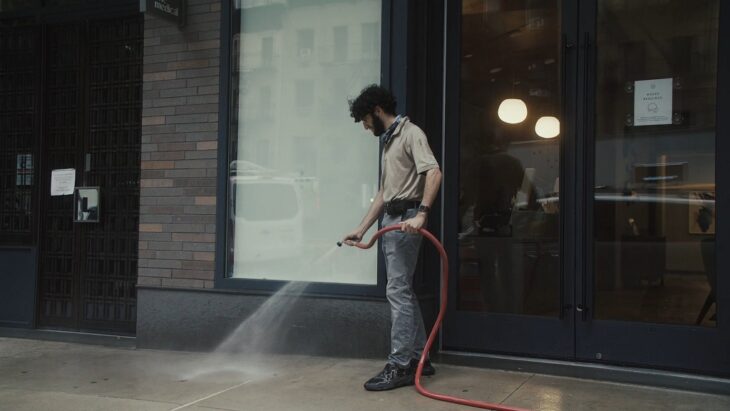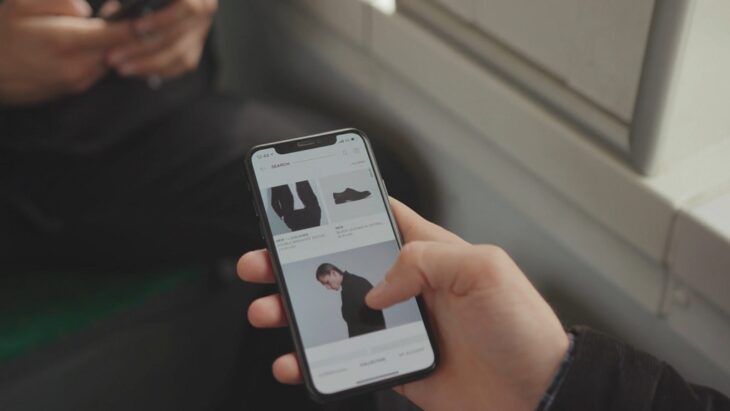Launching a business without deep pockets is absolutely possible when you pick a model with lean overhead, fast time to first revenue, and recurring clients baked in. In fact, the latest data backs you up.
The U.S. Census Bureau reported e-commerce holding about 15 to 16 percent of total retail sales in Q2 2025, with a growth rate stronger than overall retail. That kind of tailwind favors low-overhead online ventures and service businesses.
At the same time, the Federal Reserve’s Small Business Credit Survey confirms what many entrepreneurs feel: new firms are less likely to get the full financing they ask for.
Low-investment models help sidestep that hurdle because you can bootstrap from personal savings or microloans.
With that said, we prepared seven ideas that hit all the right marks, with practical startup steps, indicative costs, ways to win your first clients, and market proof points you can use in your pitch.
Table of Contents
ToggleA Quick Look
| Idea | Typical Upfront Costs | Time to First Sale | Profit Drivers | Great For |
| Solo content & social media studio | $200–$1,500 | 2–4 weeks | Retainers, niche expertise | Writers, marketers |
| Virtual assistant operations desk | $100–$800 | 1–3 weeks | Hourly blocks, monthly packages | Organizers, ops-minded pros |
| Online bookkeeping micro-firm | $300–$1,500 | 2–8 weeks | Monthly recurring clients | Detail-oriented, QuickBooks/Xero users |
| Online tutoring or micro-academy | $100–$700 | 1–2 weeks | High hourly rates, small cohorts | Teachers, subject pros |
| Local cleaning or move-out cleaning | $300–$1,200 | 1–3 weeks | Route density, recurring contracts | Service-minded teams |
| Pressure washing and exterior care | $500–$2,500 | 1–2 weeks | Seasonal bundles, add-ons | Handy, outdoor work fans |
| Niche e-commerce microbrand | $250–$2,000 | 2–6 weeks | Upsells, subscriptions | Brand builders, product curators |
Costs assume a lean start using the U.S. Small Business Administration (SBA) startup cost framework.
1. Solo Content and Social Media Studio
A one-person shop producing short videos, social posts, blog content, or email newsletters for local businesses and founders.
Why It Works Now
According to IAD, digital ad spend hit a record $259 billion in 2024. That money flows into performance creative, social video, and content supporting paid media.
Even tiny firms now budget for content, but most don’t need a full agency. That’s a sweet spot for a lean studio.
If you’re working on-site with clients, basic protections like home health care liability insurance or equivalent coverage can make your offer more credible.
Startup Checklist
- A portfolio and offers page with 3–5 sample pieces
- Scheduling and invoicing tools
- Content intake form and approval workflow
- Optional small ad spend to reach local businesses
Pricing Model Ideas
- Monthly retainer for 8–12 deliverables
- Short-form video packs sold in sprints
- Add-on services like turning blog posts into email sequences
How to Get Your First Five Clients
- Offer a content refresh to two local shops in exchange for a testimonial
- Pitch weekly posts to three busy founders on LinkedIn
- Ask a SCORE mentor to critique your offer and pricing
Proof Points
Share the IAB and PwC digital ad revenue figures to demonstrate why performance content is growing.
2. Virtual Assistant Operations Desk

A remote operations helper batching admin work for 3-10 clients each month. Typical tasks: inbox triage, scheduling, data entry, vendor follow-ups, and simple reporting.
Why It Works Now
Small businesses want flexibility instead of adding headcount, and skilled freelance work keeps rising.
Upwork’s research shows strong growth in skilled freelancing and a steady shift toward independent work.
Startup Checklist
- Reliable calendar and inbox management system
- Clear scope menu with bronze, silver, and gold tiers
- Client SOP templates to keep work consistent
- A basic service agreement with ACH or card on file
Pricing Model Ideas
- Hourly blocks that expire monthly
- Monthly retainers with defined service levels plus rush fees
How to Get Your First Five Clients
- Partner with a bookkeeping or marketing freelancer to cross-refer
- Post a weekly tip thread showcasing your ops skills
- Offer a two-hour audit to fix one bottleneck per client
Risk Controls
Front-load deposits to protect cash flow. The Federal Reserve’s survey shows younger firms face more financing gaps.
3. Online Bookkeeping Micro-Firm

Remote bookkeeping for microbusinesses that only need a few hours each month.
Why It Works Now
Employment for bookkeeping clerks may decline overall, but turnover and retirements leave about 170,000 openings per year, according to the U.S. Bureau of Labor Statistics.
Small firms still need help, but don’t hire full-time accountants. Position yourself as specialized and tech-forward.
Startup Checklist
- Accounting software subscription and bank-feed setup
- Chart of accounts templates for three niches, such as coaches, trades, and creators
- Engagement letter, monthly close checklist, and error log
Pricing Model Ideas
- Tiered monthly packages by number of transactions
- Year-end close add-ons and 1099 contractor prep
How to Get Your First Five Clients
- Offer a one-time cleanup special
- Present to a local chamber group after a SCORE mentor reviews your pricing
Scaling Path
Add a part-time accountant as you grow. Accountants and auditors are projected to expand 5 percent through 2034, so there’s talent to tap.
4. Online Tutoring or a Micro-Academy

Live one-to-one or small-group sessions in math, languages, test prep, or professional skills like Excel and SQL.
Why It Works Now
The U.S. online tutoring market is growing at a double-digit pace with an 11 percent compound annual growth rate projected through 2030. Flexible, personalized learning fits small providers perfectly.
Startup Checklist
- Video platform and whiteboard tool
- Curriculum outline for a focused niche
- Simple progress reports to retain clients
Pricing Model Ideas
- Higher rate for 1-to-1 sessions
- Discounted small cohorts with fixed start dates
- Packages of 8–12 sessions to improve cash flow
How to Get Your First Five Clients
- Host a free 30-minute online workshop
- Offer a skills diagnostic and a personalized plan
- Collect testimonials to create social proof
Upside and Caution
Demand is real, but keep software lean. Use the SBA startup cost guidance before adding more tools.
5. Local Cleaning or Move-Out Cleaning

A residential cleaning service built around recurring weekly or biweekly visits plus premium move-out or deep cleans.
Why It Works Now
Consumer cleaning behavior stays steady and spikes seasonally. The American Cleaning Institute’s national survey and sustainability reporting show consistent household cleaning activity and a large, organized industry.
Startup Checklist
- Basic supplies to start, then upgrade to pro gear
- Insurance and a simple service contract
- A route plan to increase density and reduce windshield time
Pricing Model Ideas
- Flat rate for first deep clean, recurring discount for maintenance visits
- Add-ons such as inside oven, fridge, or post-renovation clean
How to Get Your First Five Clients
- Target move-out jobs with property managers and leasing offices
- List on local directories and ask for reviews within 24 hours
- Sell a two-visit bundle: deep clean now, refresh in 30 days
Execution Tip
Track labor hours per home and aim for predictable times. Use the SBA cost calculator to ensure rates cover consumables and travel.
6. Pressure Washing and Exterior Care

Driveway, sidewalk, deck, fence, and siding cleaning plus simple gutter clears and patio sealing.
Why It Works Now
Exterior cleaning is a growing niche with low startup costs and fast payback. Industry data points to steady revenue growth in building exterior cleaning between 2020 and 2025.
Startup Checklist
- Entry-level pressure washer, surface cleaner attachment, hoses, and safety gear
- Marketing materials with clear before-after visuals
- A simple CRM or spreadsheet to group work by neighborhood
Pricing Model Ideas
- Square-foot pricing for driveways and patios
- Seasonal bundles such as spring wash and fall gutter clear
How to Get Your First Five Clients
- Pilot a weekend route in two neighborhoods and leaflet with a QR code
- Offer a neighbor bundle discount to build route density and reduce fuel time
Safety and Compliance
Use best practices for runoff and chemicals. If you expand into detergents, track product handling and local rules. The American Cleaning Institute resources can help you stay on the right side of environmental expectations.
7. Niche E-Commerce Microbrand

A small online brand selling a tight product line, for example, refillable planners, gym accessories, or pet enrichment toys. Start with a proof-of-concept run or print-on-demand item to avoid holding inventory.
Why It Works Now
E-commerce growth continues to outpace total retail, and nonstore retailers remain strong gainers in monthly retail data.
You don’t need a warehouse if your catalog is focused and your supply chain is simple.
Startup Checklist
- A single-product landing page with a clear value proposition
- Supplier or print-on-demand relationship and fulfillment plan
- Shipping and returns policy with a simple packaging workflow
Growth Engine
Run small, targeted ad tests and track conversion. The IAB and PwC reporting confirms that digital ad channels keep scaling, which you can tap in small doses at launch.
Risk Controls
Start with preorders or micro-batches until you have repeat buyers. Build an email list to reduce exposure to ad costs.
How Much Money You Actually Need
Use the SBA’s startup cost template to capture permits, insurance, basic tools, and the three-month runway most service businesses need. Even if you start from home, budget for marketing, bookkeeping software, and a contingency line.
The SBA provides a calculator and downloadable spreadsheet you can adapt in 15 minutes. If you decide to raise a small amount of capital, remember that the Federal Reserve’s Startup Firms report shows lower approval rates for new businesses than for mature ones. That’s another reason low-investment models shine.
Market Signals You Can Use in Sales Conversations
When you pitch clients, anchoring your offer in current, trustworthy stats can shorten the sales cycle.
- Digital demand tailwinds: Internet ad revenue reached a record $259 billion in 2024, up 15 percent year over year, supporting content studios and micro-agencies.
- E-commerce keeps growing: E-commerce gained share in 2025 while total retail grew more slowly, backing niche online brands and service providers.
- Freelancing is mainstreaming: Tens of millions of Americans participate in freelancing, and skilled freelancers report more opportunity. Hiring an independent contractor feels normal.
- Small business sentiment is resilient: The U.S. Chamber’s Small Business Index hit an all-time high in Q3 2025, although inflation remains a top concern. Run lean to price attractively and still protect margins.
Practical Playbooks for Each Idea
Each of the seven ideas becomes far more manageable when broken into small, repeatable steps.
The playbooks below show how to start strong in your first week and build real momentum by the end of your first month.
Content and Social Studio
- Week one: Pick a single niche, produce three portfolio samples, and write a one-page offer with three packages.
- Month one: Send 50 personalized pitches, close two retainers and one video sprint, and ask a SCORE mentor to review client workflows.
Virtual Assistant Operations Desk
- Week one: Define your scope, build a three-tier pricing table, and set up automated invoicing.
- Month one: Land three clients on bronze plans, track time, prune low-value tasks, and compare revenue to overhead using the SBA cost tool.
Online Bookkeeping Micro-Firm
- Week one: Choose your software and niche, create a monthly close checklist, and draft your engagement letter.
- Month one: Offer a cleanup special to your first three clients and create a monthly KPI snapshot to increase perceived value.
Online Tutoring or Micro-Academy
- Week one: Pick a tight offer, prepare a four-week curriculum, and set up your booking and payment page.
- Month one: Run a free workshop to collect leads, start with 1-to-1 at a premium, then launch a small cohort.
Local Cleaning
- Week one: Register the business, secure basic insurance, buy starter supplies, and build a one-page site with online booking.
- Month one: Target apartment move-outs and property managers, ask every client for a review within 24 hours, and refine product choices using American Cleaning Institute resources.
Pressure Washing and Exterior Care
- Week one: Acquire a reliable entry-level washer and safety gear, shoot before-after demos at a friend’s home, and create a one-page service menu with square-foot pricing.
- Month one: Work two neighborhoods per weekend for route density, add simple gutter clears as a seasonal service, and reference industry growth patterns in marketing.
Niche E-Commerce Microbrand
- Week one: Validate a single product with preorders or print-on-demand, set up a landing page, and prepare shipping and returns policies.
- Month one: Run a small creative test, launch a welcome email series, and reference e-commerce share and growth in investor conversations.
Budgeting, Approvals, and Risk
- Budget with structure: Use the SBA worksheets and calculator to model startup costs and three months of runway.
- Keep subscriptions minimal: Wait until revenue is consistent.
- Expect credit friction: Build deposits and prepaid packages into your offers.
- Mentoring edge: Firms that receive several hours of mentoring tend to report higher revenues and growth. Tap free mentoring through SCORE as you iterate.
What To Do Today
Pick one idea from the seven. Complete the SBA startup cost worksheet and set a 90-day budget. Draft a one-page offer and a two-step onboarding sequence. Book one SCORE mentoring session.
Send twenty personalized outreach messages before dinner. Small, consistent actions beat perfect plans. Choose a low-investment model, stay close to customers, and let real demand pull you forward.


